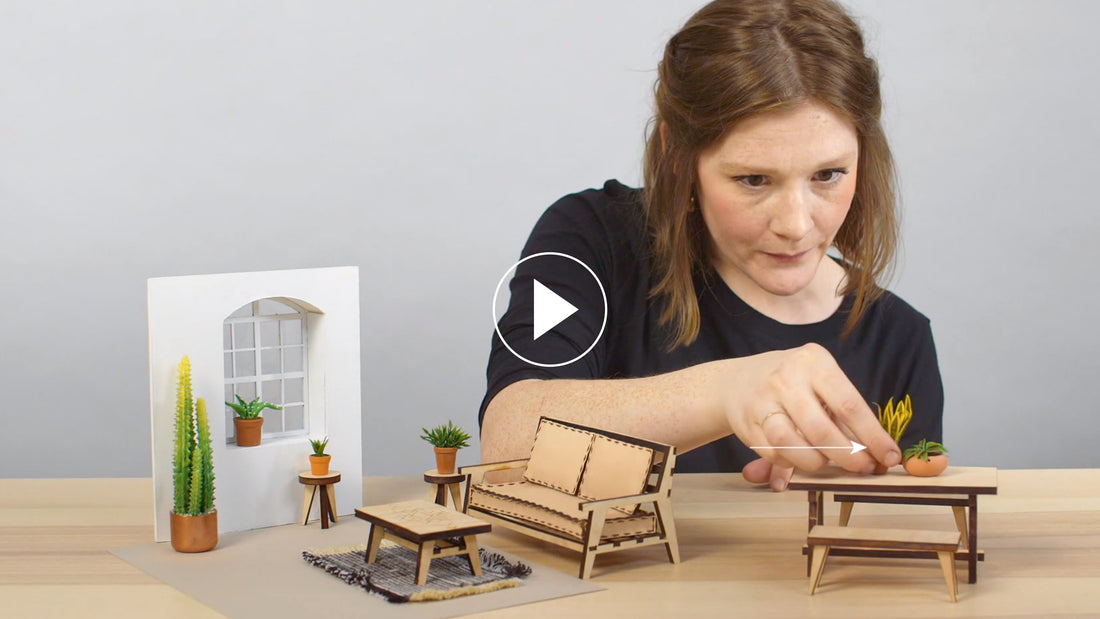
Plants 101
Everything You Need To Know About Lighting
More than anything, plants need light. It's the lifesource for all vital plant functions. Find out why, how much and what type of light your plant needs to keep on thriving.

More than anything, plants need light. It’s the lifesource for all vital plant functions. Find out why, how much and what type of light your plant needs to keep on thriving.
Why do plants need light?
All living things need food and water. For plants, light is food. They use it in a vital process known as photosynthesis, wherein the energy of light is captured by chloroplasts, sparking multiple metabolic reactions — one of these being creating sugars (food) for plants. Sugars fuel plant growth, so the more light a plant is exposed to, the more energy it will create and the faster it will grow.
Know these pairs:
- Quality = Color
- Quantity = Intensity
These characteristics of light are important in understanding how and why a plant will behave in your home.
Quality
Quality is based on the color and type of light. Light is energy that comes in varying wavelengths, each with a corresponding color. Colors we can see with our own eyes may not be useful for plants, because they ‘see’ light differently than we do. Plants appear green because they reflect green light, so green light is useless to plants. Instead, plants need light they can absorb and make use of like yellow, orange, red, blue and violet, as well as invisible light like UV light from the sun and some infrared.
Quantity
Quantity of light is based on the intensity or the brightness of light that reaches the leaves. The more light photons that hit the leaf = the more energy captured and faster growth. Begonias or Oxalis, for example, depend on intense light to sustain their fast-paced growth. Any plant that produces flowers or fruits depends on intense light too. These plants are working with basic ingredients like water, CO2, sugars and nutrients that are chemically built into complex molecules, like flower pigments, but only when the right light intensity conditions are met. Some plants have self-regulating mechanisms and will even refuse to flower or will try to but fall short halfway through the process if there isn’t enough intense light.
The darkest shade outdoors is still brighter than the sunniest window indoors.
In and Out
Outdoors, even in the shade, light is bouncing from all angles — from 360 degrees around and from the 180 degree arc above in the sky. When a plant is indoors, light usually only comes from one source, like your sunny window, massively reducing the angles light is bouncing off from, and the amount of light and vital photons a plant needs. When we bring a plant indoors, we literally invoke something called exponential reduction in photon exposure. The poetic quote above helps us remember this fact a little more easily.
Light Bright
You may have heard the terms “bright light” and “low light” plants, but what does that really mean?
“Bright light” or “full sun” means there is no barrier (curtains or blinds, a tall tree or building that creates shade) between the plant and the light source (a sunny window). This is where your plant will receive the most bright or direct light while indoors. Ficus, succulents and Monstera are sun worshipping plants and should be placed directly in or no more than 2-3 feet from a window. Generally speaking, you would want to put them the brightest spot in the room.
“Medium light” or “filtered sunlight” is light that’s been diffused (sheer curtains) between the plant and the light source (a sunny window). Some refer to it as “dappled sunlight”. Anything partially obstructing the path between your plant and the light source creates this medium light. Ferns and aroid plants (ZZ and Philodendron) have evolved to live on the forest floor, so they are used to being shaded from the sun. They have not evolved to handle the harsh rays of direct sunlight so they prefer medium light conditions.
“Low light” means no direct sunlight will reach your plant. It is probably a few feet away from your light source (sunny window) or any space where it can see outside but cannot see the sky. Low light means less energy and less food. Some plants can survive in low light conditions but they will not thrive.
Keep in mind that the sun changes places in the sky depending on time of day and season, affecting how much light your plant will get. Monitor how the light changes throughout the year and adjust your plants position accordingly.
Test it Out
Want to know how much light your plant is getting? A shadow test should do the trick. Take a sheet of paper and hold it up to the light source when the sun is high around midday. Take your free hand and place it a foot or so above your piece of paper. A sharp shadow indicates bright light while a softer shadow indicates medium light. If your plant is a few feet away from a window, even a sunny window, your plant is surviving in low light.
Remember, light is food for plants. Make sure you understand how much natural sunlight your plant needs and how much light your space can provide before making your plant selections.

Words By The Sill
Empowering all people to be plant people—a collection of articles from The Sill's team of plant experts across a variety of plant care topics to inspire confidence in the next generation of plant parents. Welcome to Plant Parenthood™.
Do Some Plant Shopping